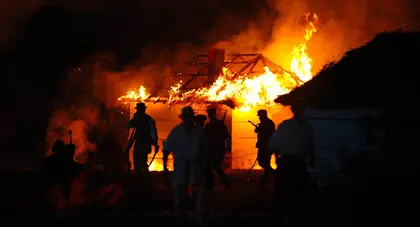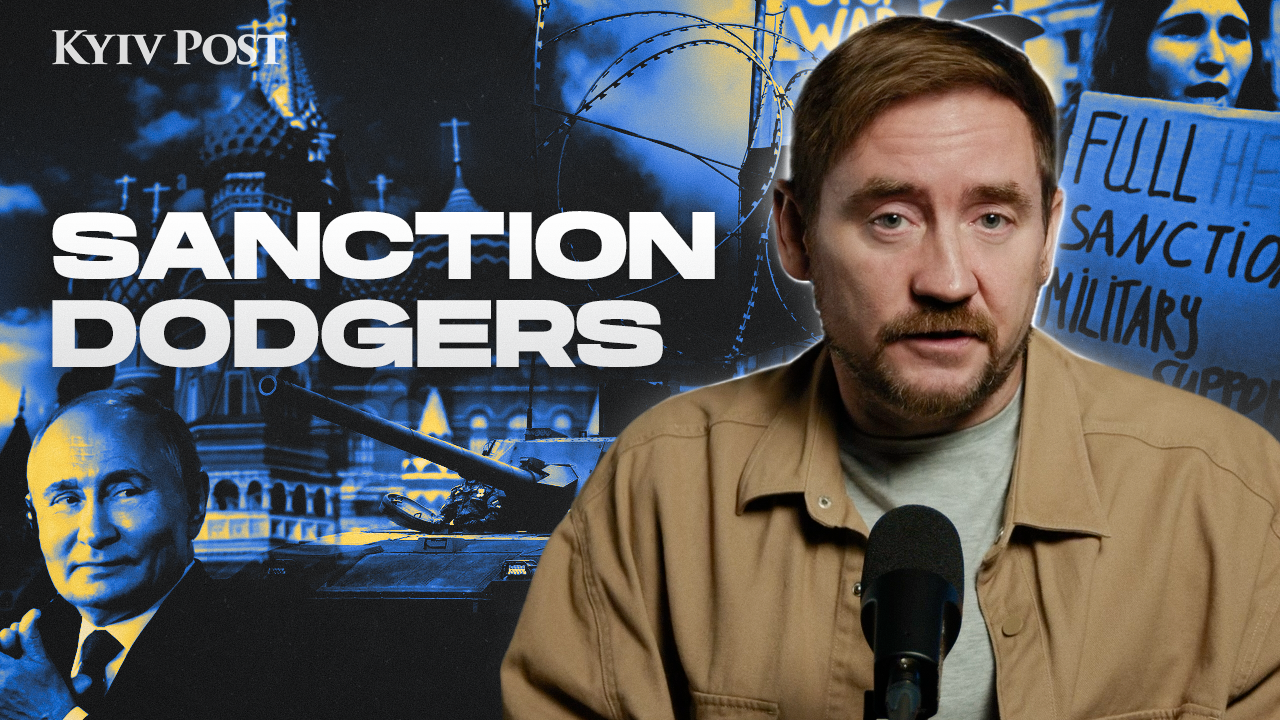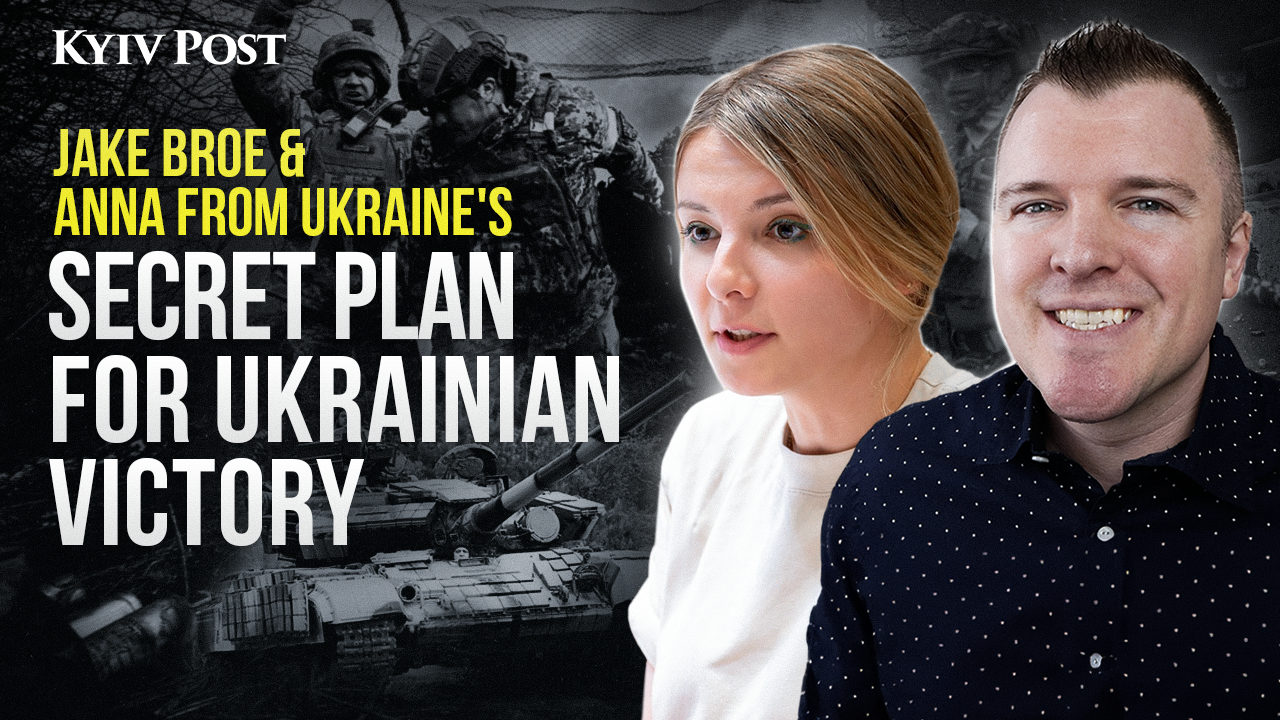Note from the Chief Editor:
This July, the 80th anniversary of the “Volhynia Slaughter”, which resulted in the massacres of tens of thousands of Poles and Ukrainians in 1943, is being commemorated. On Sunday July 9, the presidents of Ukraine and Poland jointly took part in the Ukrainian Volhynian city of Lutsk in a ceremony of remembrance emphasizing the need for understanding and reconciliation. While in Poland the “Volhynia Slaughter” anniversary has received extensive coverage in the national media and remains a very sensitive theme, in Ukraine it has hardly been mentioned at all.
The following is an article on this delicate topic just published in a Polish publication by Kyiv Post’s regular contributor, the renowned historian Yuriy Shapoval. The publication introduces him as Prof. Jurij SZAPOWAŁ – One of the more active Ukrainian historians. Professor, Doctor of Historical Sciences, Institute of Political and Nationality Studies, National Academy of Sciences of Ukraine.
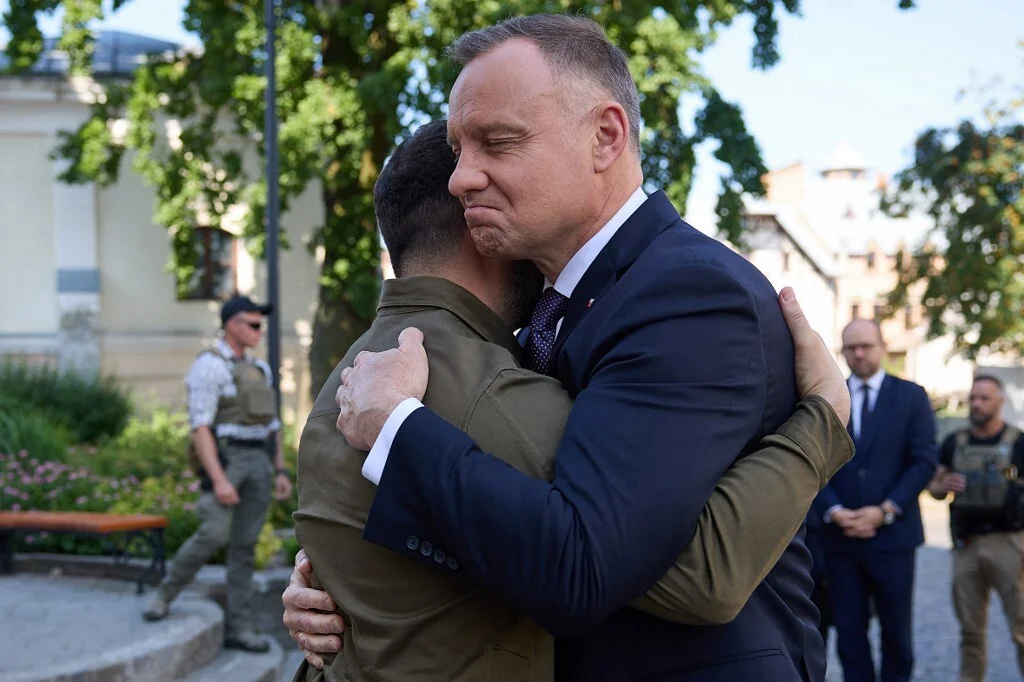
In this handout photo taken and released by the press service of the President of Ukraine on July 9, 2023, Ukrainian President Volodymyr Zelenskyi (left) hugs Polish President Andrzej Duda (right) during their meeting in Lutsk.Handout / PRESS OFFICE OF THE PRESIDENT OF UKRAINE / AFP
The subject of the Volhynian massacre provokes strong emotions. It is an important issue, especially in view of the current Russian-Ukrainian war. Indeed, Russia has launched an invasion under the pretext of ‘denazification of Ukraine.’ The Russian government employs any excuse to label contemporary Ukrainians as nationalists or even Nazis, frequently cherry-picking historical incidents to bolster Russian propaganda. One of these incidents is the Volhynian Slaughter [or Massacres].

No Compromising With the Kremlin
The Russian Federation approaches this event differently from the USSR. Soviet propaganda and those who prepared special materials to discredit the movement of national liberation of Ukraine paid little attention to the Volhynian Slaughter. In socialist Poland, this issue was also silenced. Volhynia was not the center of attention at the time. The issue didn’t resurface until after the communist regime fell and Poland became independent. The USSR and the Polish People’s Republic (PRL) didn’t want to jeopardize the basis of Polish-Ukrainian ‘friendship.’ We know very well what this ‘friendship’ meant – a collaboration between two non-democratic systems that were part of the ‘socialist camp.’
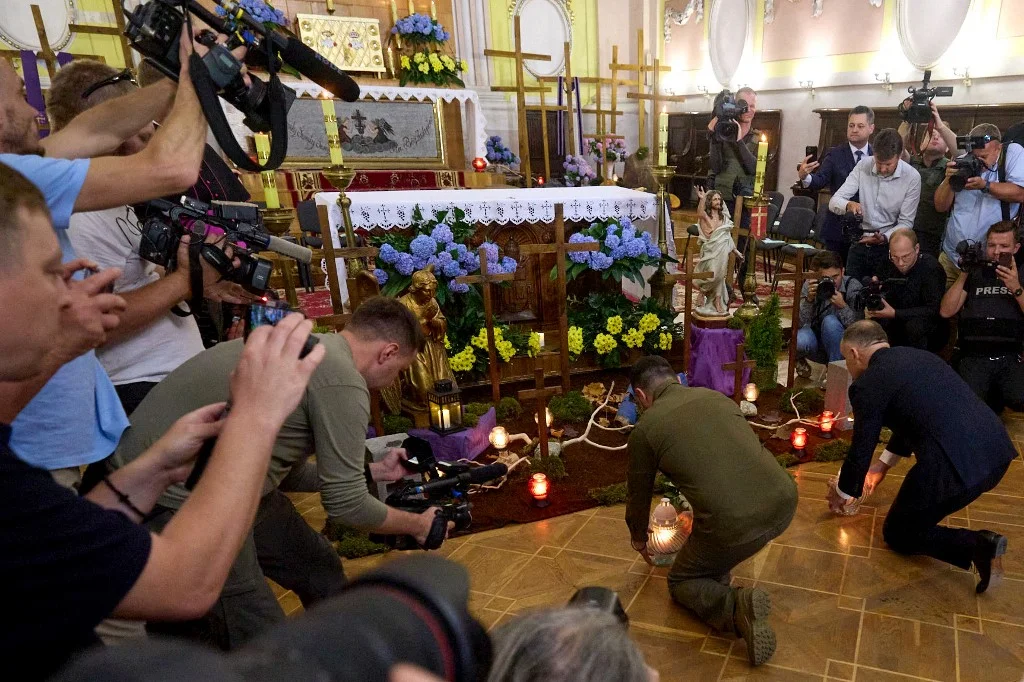
Handout / PRESS OFFICE OF THE PRESIDENT OF UKRAINE / AFP
When it comes to sources on the Volhynian massacre, it should be noted that accessing archival documents is not an issue (even amidst the ongoing war). Ukraine has opened its archives, including those of the special services. There are many unpublished documents. In partnership with the State Archive Branch of the Security Service of Ukraine, I have prepared a collection of such documents for print.
However, contemporary works on Volhynia are a separate issue. At times, Ukrainian historians predominantly refer to documents from the Organization of Ukrainian Nationalists (OUN) and the Ukrainian Insurgent Army (UPA), whereas certain Polish researchers lean towards materials from the Home Army and the Government Delegation for Poland (the agency of the Polish government in exile).
I think this approach is misguided because any such document alone cannot give an accurate account of past events without the context provided by the documents on the other side. Working on such documents requires a critical attitude and careful verification, and all those involved in shaping the memory of the past should bear this in mind.
It should be noted that the issue of Volhynia still does not receive the attention it deserves in Ukraine
At the same time, it should be noted that the issue of Volhynia still does not receive the attention it deserves in Ukraine, especially from the Ukrainian Institute of National Remembrance, which should be the organizer and coordinator of research on the subject.
Still, some research has been conducted. Of utmost importance is the research focused on dissecting the reasons that triggered the Volhynia tragedy, including territorial, political, ethnic, and social causes. The military aspects, especially the UPA’s and the Home Army’s activities, are other crucial areas of research.
In considering the causes of the events that occurred in Volhynia and Eastern Galicia in 1943 and 1944, one must take into account the wider historical context. The historical roots of the Volhynian massacre are usually discussed by Ukrainian scholars. According to many historians, the origins of the conflict can be traced back to long before the Unions of Lublin (1569) and Brest (1596) were signed, although local conflicts dominated at the time. Further events – especially the colonization policy of the Polish nobility and the brutal suppression of peasant and Cossack uprisings between the 16th and18th centuries – made the existing conflict even worse.
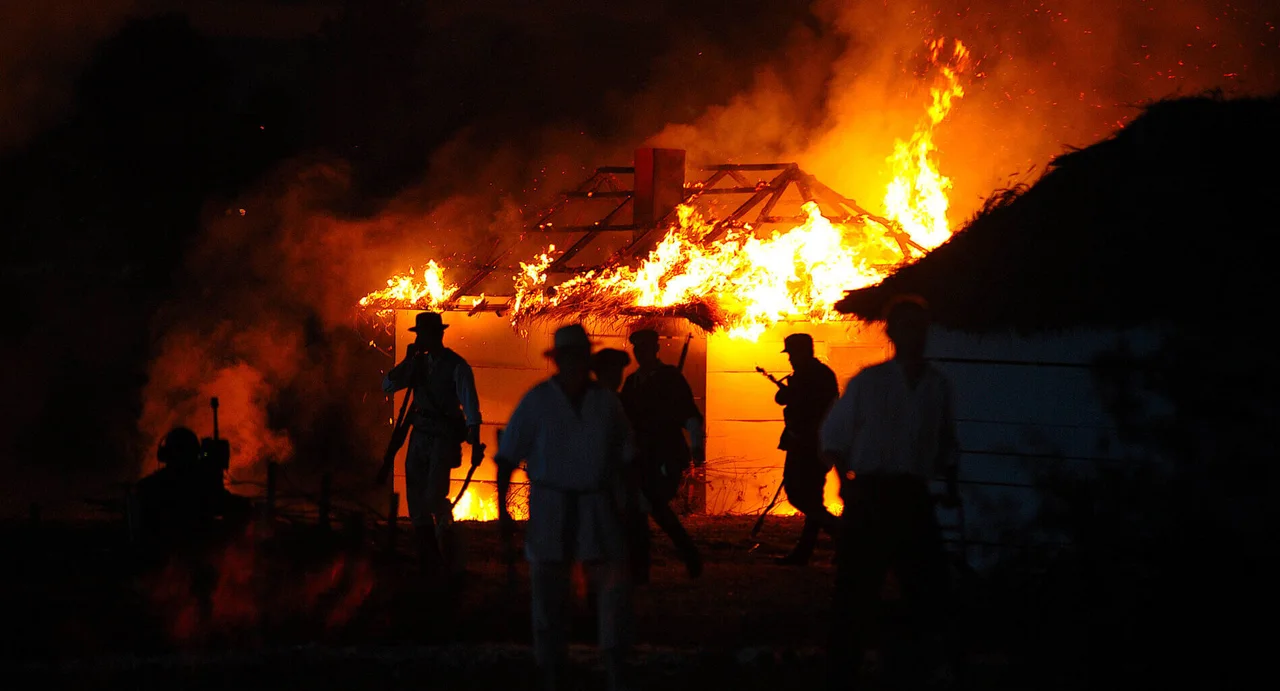
Photo imagining Volyhynia Slaughter by Polish publication Wszystko Co Najważniejsze.
Over three and a half centuries, the eastern regions of the Polish-Lithuanian Commonwealth were gradually polonized, which led to Polish settlement extending beyond the 1920 border known as the Curzon Line.
Everything that accompanied Poland’s eastward advance was reflected in the mood of the local population. Under conditions of constant tension and fear of repression by the Polish authorities, this mood could not be optimistic. Conflicts erupted and subsided, but the shadow of confrontation never faded. The Second World War brought long-standing tensions between Poland and Ukraine to the surface, as wars inevitably do.
I am convinced that actions on such a scale as in Volhynia could not have been spontaneous. The decisions to exterminate the Polish population were taken at the level of the OUN-B regional command and the UPA headquarters. In October 1942, the First Military Conference of the OUN was held in Lviv [Lwów]. Almost no detailed information regarding this event has survived, but an operational note published on 23 November 1944 gives some idea of what was discussed and decided.
The conference was opened by Mykola Lebed (‘Orest’) who stressed that he had called the meeting at the insistence of the OUN officers on account of the conditions of war. Due to the start of the armed struggle for independence, the task was then set to resolve the issue of national minorities ‘at all costs.’
The above-mentioned operational memo said: ‘All Poles will be resettled and allowed to take such belongings as they wish, as they will also be protected by England and America. As for those who will not leave – destroy them. The most active enemies, including all members of anti-Ukrainian organizations, must be destroyed the day before mobilization is announced. They shall be registered in advance by district and county military teams. The destruction will be carried out by the gendarmerie and, in some cases, by the SBU. Army soldiers may not be deployed for this purpose.’
The decision was made in October 1942, and in the summer of 1943, the UPA had begun the massacre of the peaceful Polish population. This anti-Polish action was a crime against humanity under international law, and – as argued by one Ukrainian historian – the ‘baptism of blood’ for the UPA members.
Archival research has proved one more important thing: there were different opinions about the anti-Polish actions within the OUN itself.
For example, a veteran of the nationalist movement delivered a speech on 4 May 1944, proclaiming that ‘the current actions against the Polish people would result in the death not of Poles, but of Ukrainians themselves.’ He also believed that it was right to drive westwards the ‘Mazurians, colonists brought to our lands by the Polish government’ and to destroy the Polish leaders who were directing the fight against the Ukrainians. But ‘killing people just because they are Catholics, be they women, children or the elderly, and allowing combat-ready Polish force, filled with hatred of everything Ukrainian, to gather in the cities is madness.’
The resolution of the Third Extraordinary Grand Assembly of the OUN, held from the 21s to the 25th of August 1943, noted: ‘At the Third Conference held in February 1943, the OUN leadership considered the balance between internal and external forces, taking into account the influence of external political circumstances on the hostilities. The first armed units of the Ukrainian Insurgent Army (UPA) then appeared in Polesie and Volhynia. From that moment on, the defense of the Ukrainian population in Polesie and Volhynia was taken over by the Ukrainian army.’
Ukrainian researchers argue that the anti-Polish activities of the OUN leadership were driven by the Polish policy, as the AK command required that Poles remain in Volhynia to avoid losing it entirely. Additionally, Ukrainian nationalists highlighted that certain Volhynian Poles had colluded with the Germans; that Soviet partisans had used Polish villages as a source of sustenance; that Polish guerrillas had mercilessly targeted Ukrainian intellectuals during a German-led resettlement initiative in 1942, etc. In short, both sides (i.e., Ukrainian and Polish) had their own motives. The OUN saw this as decolonizing Volhynia.
It is noteworthy that both sides – Polish and Ukrainian – spoke and wrote about ‘defending’ the population and ‘retaliation.’
It is noteworthy that both sides – Polish and Ukrainian – spoke and wrote about ‘defending’ the population and ‘retaliation.’ This is evidenced by the many documents that have survived. The vocabulary is similar, almost identical. But the victims of this ‘retaliation’ were the civilian population, Poles and Ukrainians alike.
The conflict was also fueled by Berlin and Moscow. This issue has been well-researched. Among other things, it was described in detail that after the Ukrainian police entered the forests of Volhynia and Polesie, the Germans recruited new police officers mainly from the local Poles. The Polish ‘Schupo’ battalion was transferred to Volhynia, and the German gendarmerie was withdrawn from the area.
A different perspective emerges when we consider that Poles were in charge of all German administrative offices in Lutsk and that Germans provided weapons to specific Polish villages during the organization of self-defense bases. Ukrainian historiography thus shows that the Germans used Poles against Ukrainians, as did the Stalinist regime. In particular, the People’s Commissar for Internal Affairs of the Ukrainian SSR, Sergei Savchenko, admitted this.
Archival sources also confirm that part of the blame lies with the Polish government in exile and the Home Army, with their uncompromising and dogmatic policy towards the Ukrainians. In the previous years, as part of our series of publications, we released materials about the Home Army’s liquidation units that were charged with the following tasks: 1) carrying out terrorist attacks against the political opponents of the AK, and 2) carrying out armed attacks on Ukrainian villages to physically destroy the Ukrainian population.
Considering the multitude of sources and diverse narratives, a collaboration between Ukrainian and Polish researchers is crucial. It is time for us to compare the results from both sides and to address any unanswered questions together. We should share our accumulated knowledge, isolate the disputed fragments and discuss them, keeping in mind that the current Polish historiography of Volhynia has surpassed the Ukrainian one.
Personally, I had the chance to cooperate with Polish researchers as a member of a joint Ukrainian-Polish working group responsible for preparing the multi-volume book Poland and Ukraine in the 1930s-40s. Unknown documents from the secret services archives.
After discussions (which were occasionally intense), held in both Warsaw and Kyiv, we always managed to establish mutual understanding and find solutions, leading to the publication of ten volumes, one of which (the fourth) regards events in Volhynia. It is this experience that fills me with optimism and the belief that together we can reconstruct the truth about the tragedy of Volhynia without mutual accusations and suspicions.
There is no doubt that the Forum of Polish and Ukrainian Historians, which operated between 2015 and 2018, should be reactivated.
There is no doubt that the Forum of Polish and Ukrainian Historians, which operated between 2015 and 2018, should be reactivated. I co-chaired this gathering and I know how important and useful it was. The forum was closed because of political intervention. And politicians, as we know, do not study history – they instrumentalize it.
While Volhynia may be a tough topic, discussing it is not as complicated as it seems. It is simply a matter of not only talking but also listening to each other. Every side and every had and will always have its own particular truth. The debating parties should not forget about this. However, I am not one of the advocates for writing a common history. It reminds me of what Honoré de Balzac said about fame: ‘Fame is a fickle commodity: it costs a lot, but it goes bad very quickly.’ In other words, I believe that discussions by serious scholars are more valuable than piecing together selected fragments of the past.
With regard to the Volhynian Slaughter, it is crucial not to present the problem one-dimensionally. It is also advisable to keep politics and politicians out of the Volhynia question as much as possible.
With regard to the Volhynian Slaughter, it is crucial not to present the problem one-dimensionally. It is also advisable to keep politics and politicians out of the Volhynia question as much as possible. It is my conviction that political statements and declarations from our countries should not be based on univocal or one-sided anti-Polish and anti-Ukrainian assessments, publications and conclusions. Any tensions between Poland and Ukraine on this matter would be immediately exploited by radical groups in both countries, as well as in Russia.
Therefore, historians should carry out research and not shy away from what I call critical patriotism. From a political perspective, however, the condemnation of violence suffices to prevent the ‘Volhynian Leviathan’ from ever resurfacing in our independent states.
Reprinted with the author’s permission from Wszystko Co Najważniejsze. See the original here.
The views expressed in this opinion article are the author’s and not necessarily those of Kyiv Post.
You can also highlight the text and press Ctrl + Enter


